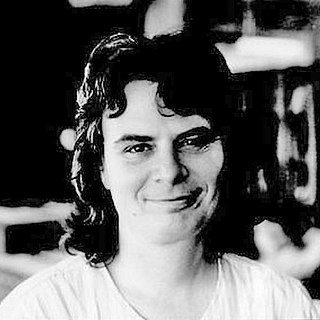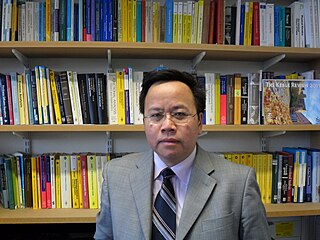Mikio Sato was a Japanese mathematician known for founding the fields of algebraic analysis, hyperfunctions, and holonomic quantum fields. He was a professor at the Research Institute for Mathematical Sciences in Kyoto.

Alberto Pedro Calderón was an Argentinian mathematician. His name is associated with the University of Buenos Aires, but first and foremost with the University of Chicago, where Calderón and his mentor, the analyst Antoni Zygmund, developed the theory of singular integral operators. This created the "Chicago School of (hard) Analysis".
The Bôcher Memorial Prize was founded by the American Mathematical Society in 1923 in memory of Maxime Bôcher with an initial endowment of $1,450. It is awarded every three years for a notable research work in analysis that has appeared during the past six years. The work must be published in a recognized, peer-reviewed venue. The current award is $5,000.

Luis Ángel Caffarelli is an Argentine-American mathematician. He studies partial differential equations and their applications.

Richard Melvin Schoen is an American mathematician known for his work in differential geometry and geometric analysis. He is best known for the resolution of the Yamabe problem in 1984.

Karen Keskulla Uhlenbeck ForMemRS is an American mathematician and one of the founders of modern geometric analysis. She is a professor emeritus of mathematics at the University of Texas at Austin, where she held the Sid W. Richardson Foundation Regents Chair. She is currently a distinguished visiting professor at the Institute for Advanced Study and a visiting senior research scholar at Princeton University.

The TIFR Centre for Applicable Mathematics is part of the School of Mathematics of the Tata Institute of Fundamental Research.
Lassi Päivärinta is a Finnish mathematician, one-time professor of applied mathematics at the department of mathematics and statistics at the University of Helsinki. Päivärinta's research is mostly in the fields of inverse problems and partial differential equations.

Sun-Yung Alice Chang is a Taiwanese American mathematician specializing in aspects of mathematical analysis ranging from harmonic analysis and partial differential equations to differential geometry. She is the Eugene Higgins Professor of Mathematics at Princeton University.
Percy Alec Deift is a mathematician known for his work on spectral theory, integrable systems, random matrix theory and Riemann–Hilbert problems.
Victor Ivrii, is a Russian, Canadian mathematician who specializes in analysis, microlocal analysis, spectral theory and partial differential equations. He is a professor at the University of Toronto Department of Mathematics.

Maciej Zworski is a Polish-Canadian mathematician, currently a professor of mathematics at the University of California, Berkeley. His mathematical interests include microlocal analysis, scattering theory, and partial differential equations.

Gui-Qiang George Chen is a Chinese-born American-British mathematician. Currently, he is Statutory Professor in the Analysis of Partial Differential Equations, Director of the Oxford Centre for Nonlinear Partial Differential Equations, and Director of the EPSRC Centre for Doctoral Training in Partial Differential Equations at the Mathematical Institute, and Professorial Fellow at Keble College, located at the University of Oxford, as well as Life Member of Clare Hall, University of Cambridge.
Irena Lasiecka is a Polish-American mathematician, a Distinguished University Professor of mathematics and chair of the mathematics department at the University of Memphis. She is also co-editor-in-chief of two academic journals, Applied Mathematics & Optimization and Evolution Equations & Control Theory.

Tatiana Toro is a Colombian-American mathematician at the University of Washington. Her research is "at the interface of geometric measure theory, harmonic analysis and partial differential equations". Toro was appointed director of the Simons Laufer Mathematical Sciences Institute for 2022–2027.

Richard Burt Melrose is an Australian mathematician and professor at the Massachusetts Institute of Technology who works on geometric analysis, partial differential equations, and differential geometry.
Nataša Šešum is a Professor of mathematics at Rutgers University, specializing in partial differential equations and geometric flow.

András Vasy is an American, Hungarian mathematician working in the areas of partial differential equations, microlocal analysis, scattering theory, and inverse problems. He is currently a professor of mathematics at Stanford University.
Johannes Sjöstrand is a Swedish mathematician, specializing in partial differential equations and functional analysis.
Kari Astala is a Finnish mathematician, specializing in analysis.











